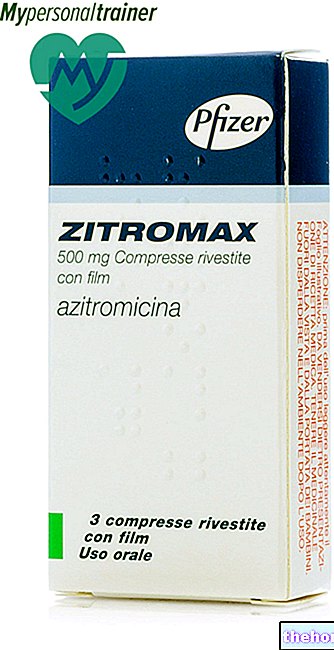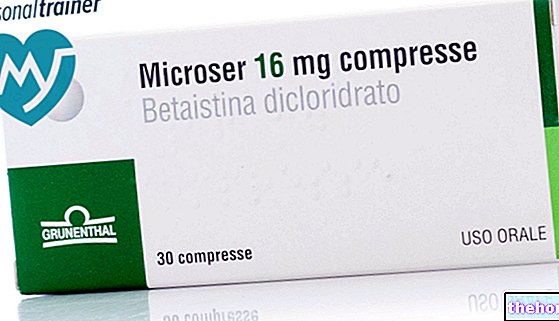Active ingredients: Ketoprofen (Ketoprofen lysine salt)
ARTHROSYLENE 160 mg suppositories
Arthrosylene package inserts are available for pack sizes:- ARTHROSYLENE 160 mg suppositories
- ARTHROSYLENE 320 mg prolonged-release hard capsules
- ARTHROSYLENE 160 mg / 2 ml solution for injection
- Arthrosylene 15% skin foam, Arthrosylene 5% gel
Why is Arthrosylene used? What is it for?
PHARMACOTHERAPEUTIC CATEGORY
Non-steroidal anti-inflammatory, belonging to the class of propionic acid derivatives.
THERAPEUTIC INDICATIONS
Symptomatic treatment of inflammatory states associated with pain, including: rheumatoid arthritis, ankylosing spondylitis, painful arthrosis, extra-articular rheumatism, post-traumatic inflammation.
Contraindications When Arthrosylene should not be used
Active peptic ulcer, or a history of gastrointestinal bleeding, ulceration or perforation, or chronic dyspepsia.
Gastritis, leukopenia and thrombocytopenia, severe bleeding disorders and severe heart failure.
The product should not be used if the patient suffers from severe renal and / or hepatic insufficiency.
Suppositories should not be administered to patients with haemorrhoidal disorders or who have recently suffered from proctitis.
The use of ketoprofen is contraindicated in patients with hypersensitivity to the active substance or to any of the excipients.
There is a possibility of cross-hypersensitivity with acetylsalicylic acid or other non-steroidal ani-inflammatory drugs.
Therefore ketoprofen should not be administered to patients in whom acetylsalicylic acid or other non-steroidal anti-inflammatory drugs have caused symptoms of asthma, bronscospasm, rhinitis, urticaria.
Third trimester of pregnancy.
The administration of ketoprofen is contraindicated during lactation.
Precautions for use What you need to know before taking Arthrosylene
The concomitant use of ARTROSYLENE 160 mg suppositories with other NSAIDs should be avoided, including selective cyclooxygenase-2 inhibitors.
Undesirable effects can be minimized by using the lowest effective dose for the shortest possible duration of treatment needed to control symptoms.
Elderly: Elderly patients have an increased frequency of adverse reactions to NSAIDs, especially gastrointestinal bleeding and perforation, which can be fatal (see dose, method and time of administration).
Gastrointestinal bleeding, ulceration and perforation: Gastrointestinal bleeding, ulceration and perforation, which can be fatal, have been reported during treatment with all NSAIDs, at any time, with or without warning symptoms or a previous history of serious gastrointestinal events.
Some epidemiological evidence suggests that ketoprofen may be associated with a higher risk of severe gastrointestinal toxicity, compared to other NSAIDs, especially at high doses (see also section Dose, method and time of administration and Contraindications).
In the elderly and in patients with a history of ulcer, particularly if complicated with haemorrhage or perforation (see section Contraindications), the risk of gastrointestinal bleeding, ulceration or perforation is higher with increased doses of NSAIDs. These patients should start treatment with the lowest available dose. Concomitant use of protective agents (misoprostol or proton pump inhibitors) should be considered for these patients and also for patients taking low doses of aspirin or other drugs that may increase the risk of gastrointestinal events (see below and Interactions section).
Patients with a history of gastrointestinal toxicity, particularly the elderly, should report any abdominal symptoms (especially gastrointestinal bleeding) particularly in the initial stages of treatment.
Caution should be exercised in patients taking concomitant medications that may increase the risk of ulceration or bleeding, such as oral corticosteroids, anticoagulants such as warfarin, selective serotonin reuptake inhibitors or antiplatelet agents such as aspirin (see Interactions section).
When gastrointestinal bleeding or ulceration occurs in patients taking ARTROSILENE 160 mg suppositories the treatment should be discontinued.
NSAIDs should be administered with caution to patients with a history of gastrointestinal disease (ulcerative colitis, Crohn's disease) as these conditions may be exacerbated (see Undesirable effects section).
Caution should be exercised in patients with a history of hypertension and / or heart failure as fluid retention and edema have been reported in association with NSAID therapy.
Patients presenting with asthma associated with chronic rhinitis, chronic sinusitis and / or nasal polyposis are at greater risk of allergy to acetylsalicylic acid and / or NSAIDs than the rest of the population. The administration of ketoprofen can contribute to triggering asthma attacks or bronchospasms, especially in people allergic to acetylsalicylic acid or NSAIDs.
In patients with impaired renal function the administration of ketoprofen should be carried out with particular caution in consideration of the essentially renal elimination of the drug.
At the start of treatment, renal function should be carefully monitored in patients with heart failure, cirrhosis and nephrosis, in subjects on diuretic therapy or with chronic renal failure, especially if elderly. In these patients, administration of ketoprofen may induce a reduction of renal blood flow caused by the inhibition of prostaglandins and lead to renal decompensation.
Serious skin reactions, some of them fatal, including exfoliative dermatitis, Stevens-Johnson syndrome and toxic epidermal necrolysis, have been reported very rarely in association with the use of NSAIDs (see Undesirable effects). In the early stages of therapy patients appear to be at higher risk: the onset of the reaction occurs in most cases within the first month of treatment.
ARTHROSYLENE 160 mg suppositories should be discontinued at the first appearance of skin rash, mucosal lesions or any other signs of hypersensitivity.
Like other NSAIDs, ketoprofen's anti-inflammatory, analgesic and antipyretic properties can mask common symptoms of infection progression, such as fever, in the case of an infectious disease.
In patients with liver function test abnormalities or with a history of liver disease, transaminase levels should be checked periodically, especially with long-term treatment.
Rare cases of jaundice and hepatitis have been reported with the use of ketoprofen.
In case of visual disturbances, such as blurred vision, treatment should be stopped.
Medicines such as ARTROSYLENE 160 mg suppositories may be associated with a modest increased risk of heart attack ("myocardial infarction") or stroke. Any risk is more likely with high doses and prolonged treatments. Do not exceed the recommended dose or duration of treatment.
If you have heart problems, have a history of stroke or think you may be at risk for these conditions (for example if you have high blood pressure, diabetes or high cholesterol or smoke) you should discuss your treatment with your doctor or pharmacist.
The use of ARTHROSYLENE 160 mg suppositories, as well as any drug that inhibits the synthesis of prostaglandins and cyclooxygenase, is not recommended in women who intend to become pregnant.
Administration of ARTROSYLENE 160 mg suppositories should be discontinued in women who have fertility problems or who are undergoing fertility investigations.
Interactions Which drugs or foods can modify the effect of Arthrosylene
Combinations with other drugs not recommended
Other NSAIDs (including selective cyclooxygenase 2 inhibitors) and high-dose salicylates:
Increased risk of gastrointestinal bleeding and ulcer.
Anticoagulants (heparin and warfarin) and platelet aggregation inhibitors (ticlopidine, clopidogrel):
NSAIDs can amplify the effects of anticoagulants, such as warfarin; NSAIDs can increase the risk of bleeding; (see SPECIAL WARNINGS section).
If co-administration is unavoidable, patients should be closely monitored
Lithium:
Risk of increased plasma lithium levels, sometimes up to toxicity levels due to decreased renal excretion of lithium. If necessary, plasma lithium levels should be closely monitored and lithium dosage adjusted during and following treatment with NSAIDs.
Methotrexate in doses above 15 mg / week:
Increased risk of haematological toxicity to methotrexate, especially when administered at high doses (> 15 mg / week), possibly related to the displacement of methotrexate from its protein binding and decreased renal clearance.
Combinations with other drugs requiring precautions for use
Antihypertensive drugs (beta-blockers, ACE inhibitors, angiotensin II antagonists and diuretics):
NSAIDs may reduce the effect of diuretics and other antihypertensive drugs.In some patients with impaired renal function (e.g. dehydrated patients or elderly patients with impaired renal function) the co-administration of an ACE inhibitor or angiotensin II antagonist and agents that inhibit the cyclo-oxygenase system may lead to further deterioration of renal function, including possible acute renal failure, usually reversible. These interactions should be considered in patients taking Arthrosylene 160 mg suppositories concomitantly with ACE inhibitors or angiotensin II antagonists. Therefore, the combination should be administered with caution, especially in elderly patients.
Patients should be adequately hydrated and monitoring of renal function should be considered after initiation of concomitant therapy.
Methotrexate in doses below 15 mg / week:
During the first few weeks of combined treatment, a complete blood count should be evaluated weekly. In the event of any renal impairment or if the patient is elderly, monitoring should be made more frequently.
Probenecid:
Co-administration of probenecid may markedly reduce the plasma clearance of ketoprofen.
Thrombolytic drugs:
Increased risk of bleeding. Ciclosporin, tacrolimus: Risk of additive nephrotoxic effects, especially in the elderly.
Corticosteroids:
Increased risk of gastrointestinal ulceration or bleeding (see SPECIAL WARNINGS section).
Anti-aggregating agents and selective serotonin reuptake inhibitors (SSRIs):
increased risk of gastrointestinal bleeding (see SPECIAL WARNINGS section).
Pentoxifylline:
Increased risk of bleeding. More frequent clinical checks and monitoring of bleeding time.
Diphenylhydantoin and Sulfonamides:
Since the protein binding of ketoprofen is high, it may be necessary to reduce the dosage of anticoagulants, diphenylhydantoin or sulfonamides that should be administered simultaneously.
Warnings It is important to know that:
Use during pregnancy or breastfeeding
Pregnancy
Inhibition of prostaglandin synthesis can adversely affect pregnancy and / or embryo / fetal development.
Results of epidemiological studies suggest an increased risk of miscarriage and cardiac malformation and gastroschisis after use of a prostaglandin synthesis inhibitor in early pregnancy. The absolute risk of cardiac malformations increased from less than 1% to approximately 1.5%. The risk has been considered to increase with dose and duration of therapy. In animals, administration of prostaglandin synthesis inhibitors has been shown to cause increased loss of pre- and post-implantation and of embryo-fetal mortality.
In addition, an increased incidence of various malformations, including cardiovascular, has been reported in animals given prostaglandin synthesis inhibitors during the organogenetic period.
During the third trimester of pregnancy, all prostaglandin synthesis inhibitors can expose the fetus to:
- cardiopulmonary toxicity (with premature closure of the arterial duct and pulmonary hypertension);
- renal dysfunction, which can progress to renal failure with oligo-hydroamnios;
the mother and the newborn, at the end of pregnancy, to:
- possible prolongation of bleeding time, and antiplatelet effect which may occur even at very low doses;
- inhibition of uterine contractions resulting in delayed or prolonged labor
The administration of ketoprofen is contraindicated during lactation.
Effects on ability to drive and use machines
Based on the pharmacodynamic profile and the reported side effects (possibility of onset of dizziness), patients experiencing dizziness or somnolence, vertigo, convulsions, should refrain from driving a vehicle or operating machinery that requires integrity of alertness.
Dosage and method of use How to use Arthrosylene: Dosage
1 suppository 2 times a day or according to medical prescription.
In elderly patients the posology must be carefully established by the doctor who will have to evaluate a possible reduction of the dosages indicated above.
The maximum daily dose is 200 mg of ketoprofen, corresponding to 320 mg of ketoprofen lysine salt. The benefit-risk balance should be carefully considered before starting treatment with the daily dose of 200 mg of ketoprofen, and higher doses are not recommended (see also section Special warnings).
Undesirable effects can be minimized by using the shortest possible duration of treatment needed to control symptoms (see section Special warnings).
Overdose What to do if you have taken too much Arthrosylene
Cases of overdose have been reported with doses exceeding 2.5 g of ketoprofen. In most cases, the symptoms observed were harmless and limited to lethargy, drowsiness, nausea, vomiting and epigastric pain.
There is no specific antidote for ketoprofen overdose. If massive overdose is suspected, gastric lavage is recommended and symptomatic supportive treatment is advised to compensate for dehydration, control urinary excretion and, if present, correct acidosis.
In case of kidney failure, hemodialysis can be useful in eliminating the drug from the body.
Side Effects What are the side effects of Arthrosylene
Gastrointestinal system: the most commonly observed adverse events are gastrointestinal in nature. Peptic ulcers, gastrointestinal perforation or bleeding, sometimes fatal, may occur, particularly in the elderly (see section Special warnings).
After administration of ARTHROSYLENE 160 mg suppositories the following have been reported: nausea, vomiting, diarrhea, flatulence, constipation, dyspepsia, abdominal pain, melaena, haematemesis, ulcerative stomatitis, exacerbation of colitis and Crohn's disease (see section Special warnings).
Gastritis has been observed less frequently.
Edema, hypertension and heart failure have been reported in association with NSAID treatment.
The following adverse reactions have been observed with the use of ketoprofen in adults:
Gastrointestinal disorders
dyspepsia, nausea, abdominal pain, vomiting, constipation, diarrhea, flatulence, gastritis, stomatitis, peptic ulcer, exacerbation of colitis and Crohn's disease, gastrointestinal haemorrhage and perforation.
Disorders of the blood and lymphatic system
haemorrhagic anemia, agranulocytosis, thrombocytopenia, bone marrow failure.
Vascular pathologies
hypertension, vasodilation.
Disorders of the immune system
anaphylactic reactions (including shock)
Psychiatric disorders
mood changes
Nervous system disorders
headache, dizziness, somnolence, paraesthesia, dyskinesia, convulsions, dysgeusia
Eye disorders
blurred vision (see SPECIAL WARNINGS section)
Ear and labyrinth disorders
tinnitus
Cardiac pathologies
heart failure
Respiratory, thoracic and mediastinal disorders
asthma, bronchospasm (especially in patients with known hypersensitivity to acetylsalicylic acid and other NSAIDs), rhinitis
Hepatobiliary disorders
hepatitis, increased transaminases, elevated serum bilirubin levels due to liver disorders
Skin and subcutaneous tissue disorders
rash, pruritus, exanthema, bullous eruptions including Stevens-Johnson syndrome and toxic epidermal necrolysis, photosensitivity reactions, alopecia, urticaria, angioedema,
Renal and urinary disorders:
acute renal failure, tubulointerstitial nephritis, nephritic syndrome, abnormal kidney function tests
General disorders and administration site conditions:
edema, asthenia
Metabolism and nutrition disorders
weight gain
As with other non-steroidal anti-inflammatory drugs, disorders, usually transient affecting the gastrointestinal tract, such as gastralgia, may be found.
Only exceptionally have transient dyskinesia, asthenia, headache, dizziness and skin rash been reported. With the use of suppositories local disturbances (tenesmus, burning) and decrease in the consistency of the stool may occur.
Medicines such as ARTROSYLENE 160 mg suppositories may be associated with a modest increased risk of heart attack ("myocardial infarction") or stroke.
Notify the attending physician of any undesirable effects not described in the package leaflet.
Expiry and Retention
Expiry: see the expiry date printed on the package.
The expiry date indicated refers to the product in intact packaging, correctly stored.
Warning: do not use the medicine after the expiry date shown on the package. Store below 30 ° C
Medicines should not be disposed of via wastewater or household waste. Ask your pharmacist how to throw away medicines you no longer use. This will help protect the environment.
Keep this medicine out of the reach and sight of children.
COMPOSITION
One suppository contains:
Active ingredient: Ketoprofen 160 mg lysine salt
Excipients: semisynthetic glycerides.
PHARMACEUTICAL FORM AND CONTENT
Suppositories
Box of 10 suppositories.
Source Package Leaflet: AIFA (Italian Medicines Agency). Content published in January 2016. The information present may not be up-to-date.
To have access to the most up-to-date version, it is advisable to access the AIFA (Italian Medicines Agency) website. Disclaimer and useful information.
01.0 NAME OF THE MEDICINAL PRODUCT
ARTHROSYLENE 160 MG SUPPOSITORIES
02.0 QUALITATIVE AND QUANTITATIVE COMPOSITION
Each suppository contains the active ingredient ketoprofen 160 mg lysine salt
For the full list of excipients, see section 6.1
03.0 PHARMACEUTICAL FORM
Suppositories
04.0 CLINICAL INFORMATION
04.1 Therapeutic indications
Symptomatic treatment of inflammatory states associated with pain, including: rheumatoid arthritis, ankylosing spondylitis, painful arthrosis, extra-articular rheumatism, post-traumatic inflammation.
04.2 Posology and method of administration
1 suppository 2 times a day or according to medical prescription.
In the treatment of elderly patients the posology must be carefully established by the doctor who will have to evaluate a possible reduction of the dosages indicated above.
The maximum daily dose is 200 mg of ketoprofen, corresponding to 320 mg of ketoprofen lysine salt. The benefit-risk balance should be carefully considered before starting treatment with the ketoprofen 200 mg daily dose, and higher doses are not recommended (see also section 4.4).
Undesirable effects can be minimized with the use of the shortest possible duration of treatment that is needed to control symptoms (see section 4.4).
04.3 Contraindications
The use of ketoprofen is contraindicated in patients with hypersensitivity to the active substance or to any of the excipients.
There is a possibility of cross-hypersensitivity with acetylsalicylic acid or other non-steroidal anti-inflammatory drugs. Therefore, ketoprofen should not be administered to patients in whom acetylsalicylic acid or other non-steroidal anti-inflammatory drugs have caused symptoms of asthma, bronchospasm, rhinitis, urticaria. Suppositories should not be administered to patients with haemorrhoidal disorders or who have recently been affected from proctitis.
Active peptic ulcer, or a history of gastrointestinal bleeding, ulceration, perforation or chronic dyspepsia.
Gastritis, leukopenia and thrombocytopenia, severe bleeding disorders and severe heart failure.
The product should not be used if the patient suffers from severe renal and / or hepatic insufficiency.
Third trimester of pregnancy.
The administration of ketoprofen is contraindicated during lactation.
04.4 Special warnings and appropriate precautions for use
The concomitant use of ARTROSYLENE 160 mg suppositories with other NSAIDs should be avoided, including selective cyclooxygenase-2 inhibitors.
Undesirable effects can be minimized with the use of the lowest effective dose for the shortest possible duration of treatment needed to control symptoms (see section 4.2 and the paragraphs below on gastrointestinal and cardiovascular risks).
Elderly: Elderly patients have an increased frequency of adverse reactions to NSAIDs, especially gastrointestinal bleeding and perforation, which can be fatal (see section 4.2).
Gastrointestinal bleeding, ulceration and perforation: Gastrointestinal bleeding, ulceration and perforation, which can be fatal, have been reported during treatment with all NSAIDs, at any time, with or without warning symptoms or a previous history of serious gastrointestinal events.
Some epidemiological evidence suggests that ketoprofen may be associated with a higher risk of severe gastrointestinal toxicity, compared to other NSAIDs, especially at high doses (see also sections 4.2 and 4.3).
In the elderly and in patients with a history of ulcer, particularly if complicated with haemorrhage or perforation (see section 4.3), the risk of gastrointestinal bleeding, ulceration or perforation is higher with increased doses of NSAIDs. These patients should start treatment with the lowest available dose. Concomitant use of protective agents (misoprostol or proton pump inhibitors) should be considered for these patients and also for patients taking low doses of aspirin or other drugs that may increase the risk of gastrointestinal events (see below and section 4.5).
Patients with a history of gastrointestinal toxicity, particularly the elderly, should report any abdominal symptoms (especially gastrointestinal bleeding) particularly in the initial stages of treatment.
Caution should be exercised in patients taking concomitant medications that may increase the risk of ulceration or bleeding, such as oral corticosteroids, anticoagulants such as warfarin, selective serotonin reuptake inhibitors or antiplatelet agents such as aspirin (see section 4.5).
When gastrointestinal bleeding or ulceration occurs in patients taking ARTROSILENE 160 mg suppositories the treatment should be discontinued.
NSAIDs should be administered with caution to patients with a history of gastrointestinal disease (ulcerative colitis, Crohn's disease) as these conditions may be exacerbated (see section 4.8 - undesirable effects).
Patients with asthma associated with chronic rhinitis, chronic sinusitis and / or nasal polyposis are at greater risk of allergy to acetylsalicylic acid and / or NSAIDs than the rest of the population. The administration of Ketoprofen can contribute to triggering asthma attacks or bronchospasms, especially in people allergic to acetylsalicylic acid or NSAIDs (see Section 4.3).
In patients with impaired renal function the administration of ketoprofen should be carried out with particular caution in consideration of the essentially renal elimination of the drug.
At the start of treatment, renal function should be carefully monitored in patients with heart failure, cirrhosis and nephrosis, in subjects on diuretic therapy or with chronic renal failure, especially if elderly. In these patients, administration of ketoprofen may induce a reduction of renal blood flow caused by the inhibition of prostaglandins and lead to renal decompensation.
Serious skin reactions, some of them fatal, including exfoliative dermatitis, Stevens-Johnson syndrome and toxic epidermal necrolysis, have been reported very rarely in association with the use of NSAIDs (see 4.8). In the early stages of therapy patients appear to be higher risk: the onset of the reaction occurs in most cases within the first month of treatment.
ARTHROSYLENE 160 mg suppositories should be discontinued at the first appearance of skin rash, mucosal lesions or any other signs of hypersensitivity.
Like other NSAIDs, ketoprofen's anti-inflammatory, analgesic and antipyretic properties can mask common symptoms of infection progression, such as fever, in the case of an infectious disease.
In patients with liver function test abnormalities or with a history of liver disease, transaminase levels should be checked periodically, especially with long-term treatment.
Rare cases of jaundice and hepatitis have been reported with the use of ketoprofen.
In case of visual disturbances, such as blurred vision, treatment should be stopped.
The use of ARTHROSYLENE 160 mg suppositories, as well as any drug that inhibits the synthesis of prostaglandins and cyclooxygenase, is not recommended in women who intend to become pregnant.
Administration of ARTROSYLENE 160 mg suppositories should be discontinued in women who have fertility problems or who are undergoing fertility investigations.
Cardiovascular and cerebrovascular effects
Adequate monitoring and instruction are required in patients with a history of mild to moderate hypertension and / or congestive heart failure as fluid retention and edema have been reported in association with NSAID treatment.
Clinical studies and epidemiological data suggest that the use of some NSAIDs (especially at high doses and for long-term treatment) may be associated with a modest increased risk of arterial thrombotic events (eg, myocardial infarction or stroke). There are insufficient data to exclude a similar risk for ketoprofen lysine salt.
Patients with uncontrolled hypertension, congestive heart failure, established ischemic heart disease, peripheral arterial disease and / or cerebrovascular disease should only be treated with ketoprofen lysine salt after careful consideration. Similar considerations should be made before initiating long-term treatment in patients with risk factors for cardiovascular disease (eg hypertension, hyperlipidaemia, diabetes mellitus, smoking).
04.5 Interactions with other medicinal products and other forms of interaction
Combinations with other drugs not recommended
Other NSAIDs (including selective cyclooxygenase 2 inhibitors) and high-dose salicylates:
Increased risk of gastrointestinal bleeding and ulcer.
Anticoagulants (heparin and warfarin) and platelet aggregation inhibitors (ticlopidine, clopidogrel):
NSAIDs can amplify the effects of anticoagulants, such as warfarin; NSAIDs may increase the risk of bleeding (see section 4.4).
If co-administration is unavoidable, patients should be closely monitored.
Lithium:
Risk of increased plasma lithium levels, sometimes up to toxicity levels due to decreased renal excretion of lithium. If necessary, plasma lithium levels should be closely monitored and lithium dosage adjusted during and following treatment with NSAIDs.
Methotrexate in doses above 15 mg / week:
Increased risk of haematological toxicity to methotrexate, especially when administered at high doses (> 15 mg / week), possibly related to the displacement of methotrexate from its protein binding and decreased renal clearance.
Combinations with other drugs requiring precautions for use Antihypertensive drugs (beta-blockers, ACE inhibitors, angiotensin II antagonists and diuretics):
NSAIDs may reduce the effect of diuretics and other antihypertensive drugs. In some patients with impaired renal function (eg dehydrated patients or elderly patients with impaired renal function) co-administration of an ACE inhibitor or an angiotensin antagonist II and agents that inhibit the cyclooxygenase system can lead to further deterioration of renal function, including possible acute renal failure, usually reversible. These interactions should be considered in patients taking Arthrosylene 160 mg suppositories concomitantly with ACE inhibitors or angiotensin II antagonists. Therefore, the combination should be administered with caution, especially in elderly patients.
Patients should be adequately hydrated and monitoring of renal function should be considered after initiation of concomitant therapy.
Methotrexate in doses below 15 mg / week:
During the first few weeks of combined treatment, a complete blood count should be evaluated weekly. In the event of any renal impairment or if the patient is elderly, monitoring should be made more frequently.
Probenecid:
Co-administration of probenecid may markedly reduce the plasma clearance of ketoprofen.
Thrombolytic drugs:
Increased risk of bleeding.
Ciclosporin, tacrolimus:
Risk of additive nephrotoxic effects, especially in the elderly.
Corticosteroids:
Increased risk of gastrointestinal ulceration or bleeding (see section 4.4).
Pentoxifylline:
Increased risk of bleeding. More frequent clinical checks and monitoring of bleeding time.
Anti-aggregating agents and selective serotonin reuptake inhibitors (SSRIs):
increased risk of gastrointestinal bleeding (see section 4.4).
Diphenylhydantoin and Sulfonamides:
Since the protein binding of ketoprofen is high, it may be necessary to reduce the dosage of anticoagulants, diphenylhydantoin or sulfonamides that should be administered simultaneously.
04.6 Pregnancy and lactation
Pregnancy
Inhibition of prostaglandin synthesis can adversely affect pregnancy and / or embryo / fetal development.
Results of epidemiological studies suggest an increased risk of miscarriage and cardiac malformation and gastroschisis after use of a prostaglandin synthesis inhibitor in early pregnancy. The absolute risk of cardiac malformations increased from less than 1% up to approximately 1.5%. The risk has been considered to increase with dose and duration of therapy. In animals, administration of prostaglandin synthesis inhibitors has been shown to cause increased pre- and post-implantation loss and mortality. embryo-fetal.
In addition, an increased incidence of various malformations, including cardiovascular, has been reported in animals given prostaglandin synthesis inhibitors during the organogenetic period.
During the third trimester of pregnancy, all prostaglandin synthesis inhibitors can expose
the fetus to:
- cardiopulmonary toxicity (with premature closure of the arterial duct and pulmonary hypertension);
- renal dysfunction, which can progress to renal failure with oligo-hydroamnios;
the mother and the newborn, at the end of pregnancy, to:
- possible prolongation of bleeding time, and antiplatelet effect which may occur even at very low doses;
- inhibition of uterine contractions resulting in delayed or prolonged labor
The administration of ketoprofen is contraindicated during lactation.
04.7 Effects on ability to drive and use machines
There are no known effects on the degree of attention.
Based on the pharmacodynamic profile and the reported side effects (possibility of onset of dizziness), patients who experience dizziness or somnolence, vertigo, convulsions should refrain from driving a vehicle or operating machinery that requires integrity of alertness.
04.8 Undesirable effects
Gastrointestinal system: the most commonly observed adverse events are gastrointestinal in nature. Peptic ulcers, gastrointestinal perforation or haemorrhage, sometimes fatal, may occur, particularly in the elderly (see section 4.4).
Nausea, vomiting, diarrhea, flatulence, constipation, dyspepsia, abdominal pain, melaena, haematemesis, ulcerative stomatitis, exacerbation of colitis and Crohn's disease have been reported following administration of ARTHROSYLENE 160 mg suppositories (see section 4.4).
Gastritis has been observed less frequently.
Edema, hypertension and heart failure have been reported in association with NSAID treatment.
Clinical studies and epidemiological data suggest that the use of some NSAIDs (especially at high doses and for long-term treatment) may be associated with a modest increased risk of arterial thrombotic events (eg, myocardial infarction or stroke) ( see section 4.4).
The following adverse reactions have been observed with the use of ketoprofen in adults:
Gastrointestinal disorders:
dyspepsia, nausea, abdominal pain, vomiting, constipation, diarrhea, flatulence, gastritis, stomatitis, peptic ulcer, exacerbation of colitis and Crohn's disease, gastrointestinal haemorrhage and perforation.
Disorders of the blood and lymphatic system:
haemorrhagic anemia, agranulocytosis, thrombocytopenia, bone marrow failure.
Vascular disorders:
hypertension, vasodilation.
Immune system disorders:
anaphylactic reactions (including shock)
Psychiatric disorders:
mood changes
Nervous system disorders:
headache, dizziness, somnolence, paraesthesia, dyskinesia, convulsions, dysgeusia
Eye disorders:
blurred vision (see Section 4.4)
Ear and labyrinth disorders:
tinnitus
Cardiac disorders:
heart failure
Respiratory, thoracic and mediastinal disorders:
asthma, bronchospasm (especially in patients with known hypersensitivity to acetylsalicylic acid and other NSAIDs), rhinitis
Hepatobiliary disorders:
hepatitis, increased transaminases, elevated serum bilirubin levels due to liver disorders
Skin and subcutaneous tissue disorders:
rash, pruritus, exanthema, bullous eruptions including Stevens-Johnson syndrome and toxic epidermal necrolysis, photosensitivity reactions, alopecia, urticaria, angioedema
Renal and urinary disorders:
acute renal failure, tubulointerstitial nephritis, nephritic syndrome, abnormal kidney function tests
General disorders and administration site conditions:
edema, asthenia
Metabolism and nutrition disorders:
weight gain
As with other non-steroidal anti-inflammatory drugs, disorders, usually transient, of the gastrointestinal tract, such as gastralgia, may be found. Only exceptionally have transient dyskinesia, asthenia, headache, dizziness and skin rash been reported.
04.9 Overdose
Cases of overdose have been reported with doses exceeding 2.5 g of ketoprofen.
In most cases, the symptoms observed were harmless and limited to lethargy, drowsiness, nausea, vomiting and epigastric pain.
There is no specific antidote for ketoprofen overdose. If massive overdose is suspected, gastric lavage is recommended and symptomatic supportive treatment is advised to compensate for dehydration, control urinary excretion and, if present, correct acidosis.
In case of kidney failure, hemodialysis can be useful in eliminating the drug from the body.
05.0 PHARMACOLOGICAL PROPERTIES
05.1 Pharmacodynamic properties
Pharmacotherapeutic group: non-steroidal anti-inflammatory / antirheumatic drugs
ATC: M01AE03.
Ketoprofen lysine salt is a drug with anti-inflammatory, analgesic and antipyretic activity.
Ketoprofen lysine salt, like ketoprofen, owes its anti-inflammatory efficacy above all to the inhibition of the synthesis of prostaglandins of arachidonic acid, to the stabilization of the lysosomal membrane with inhibition of enzymatic release, to the antibradykinin activity and to the antiplatelet activity, these factors play an important role in the pathogenesis of inflammatory phenomena.
Ketoprofen lysine salt has a marked analgesic effect both in correlation with the anti-inflammatory action exerted on inflammatory processes, and with a central effect.
Ketoprofen lysine salt exerts antipyretic activity without however interfering with normal thermoregulation processes.
05.2 Pharmacokinetic properties
The ketoprofen lysine salt is rapidly absorbed rectally within 45-60 minutes. The maximum serum level is reached after 1-2 hours. Repeated administration does not change the kinetics of the drug, nor does it produce accumulation. Elimination is essentially urinary and massive: 50% of the product administered systemically is excreted in the urine in 6 hours. Metabolization is significant: about 55% of the product administered systemically is found in the form of metabolites in the urine. Ketoprofen is 95% bound to serum proteins.
05.3 Preclinical safety data
The toxicological tests carried out on the active ingredient have shown the low toxicity of ketoprofen lysine salt. The LD50, depending on the route of administration, is on average 300 mg / kg in rats, equal to 80-100 times the active dose as an anti-inflammatory and analgesic. The product is not chemically correlated with drugs known to have a "carcinogenic action".
Regarding embryo-fetal toxicity and teratogenesis of NSAIDs in animals, see section 4.6.
06.0 PHARMACEUTICAL INFORMATION
06.1 Excipients
Semi-synthetic glycerides
06.2 Incompatibility
None
06.3 Period of validity
5 years.
06.4 Special precautions for storage
Store below 30 ° C.
06.5 Nature of the immediate packaging and contents of the package
Valve in polythene aluminum, enclosed in a box of 10 suppositories
06.6 Instructions for use and handling
No special instructions
07.0 MARKETING AUTHORIZATION HOLDER
Dompé pharmaceuticals s.p.a. - Milan, Via San Martino 12
Dealer for sale: Dompé spa - Via Campo di Pile - L "Aquila
08.0 MARKETING AUTHORIZATION NUMBER
AIC n. 024022030
09.0 DATE OF FIRST AUTHORIZATION OR RENEWAL OF THE AUTHORIZATION
Date of first authorization: 13.6.1979
Date of renewal of the authorization: 1.6.2010
10.0 DATE OF REVISION OF THE TEXT
May 2012




























